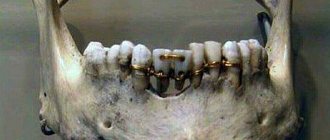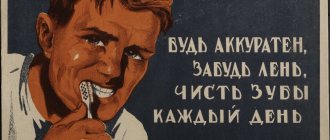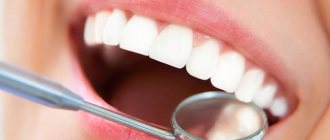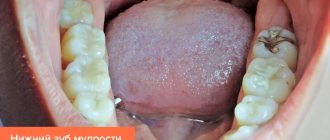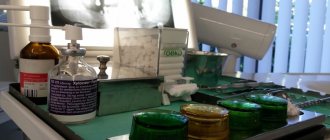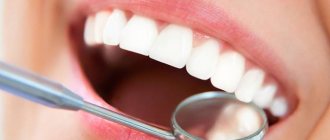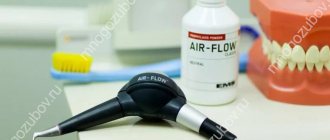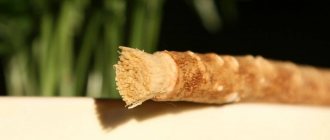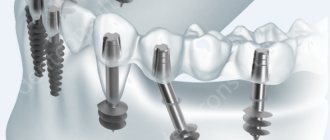Saint Antipas and granddaughter of Monomakh
The oldest, albeit dubious, dental recipes can be considered ancient Slavic conspiracies preserved in folklore. Here is an example of one of them: “You are a month, your silver horns, your golden legs. Come down, month, take away my dental grief. Take the pain under the clouds. Here’s a tooth, here’s two, here’s three – they’re all yours, take them...”
Conspiracies dating back to the depths of pagan times were supposed to be pronounced in a special way or in a special place. For example, in the case of a spell addressed to the month, it was necessary to pronounce this recitative, turning one’s face to the moon, so that its light would definitely fall on the sore teeth. A popular place for “treatment” of teeth in folk medicine was also a clearing with a large oak tree, next to which springs were sure to flow. Oak bark soaked overnight in the water of these springs was considered the best remedy for toothache. In a word, the imagination of such “recipes” is amazing, but we can hardly be amazed by their effectiveness.
The arrival of Christianity in Rus' left its mark on folk dentistry. To get rid of toothache, people were supposed to chew a blessed church candle or hang small silver teeth on icons. Even saints appeared, protecting and saving from toothache. These were considered either Saint Anthony or Saint Antipas. Records of “healing” prayers addressed to the latter have been preserved: “O glorious martyr Antipas, quick helper to Christians in illness! I believe with all my soul and thought that the Lord has given you the gift of healing the sick, healing the sick, and strengthening the paralytic. For this reason, to you, as a blessed doctor of diseases, I, the weak, come running and, kissing your venerable image with reverence, I pray - through your intercession from the Heavenly King, ask me, who is sick, for healing from the dental disease that depresses me...”
For most of our ancestors, such recipes and methods of treatment had no alternatives until the beginning of the last century. However, the first truly scientific work in the field of dentistry related to the history of our Fatherland appeared nine centuries ago. Historians are still arguing about the authorship of the Byzantine treatise “Ointments of Lady Zoya the Queen” - one of the old and generally accepted versions says that this manuscript was created through the efforts and by order of the granddaughter of the ancient Russian prince Vladimir Monomakh.
Dobrodeya Mstislavna, baptized Zoya, the daughter of a Novgorod prince and a Swedish princess born in Rus', in 1122 became the wife of the eldest son of the Byzantine emperor. It is she who is credited with the authorship of a medical treatise containing quite scientific methods for that era for the treatment of dental diseases and oral care. One of the recipes for “Zoya the Queen” reads: “For swaying teeth, take two drachms of castor beans, alum and pomegranate peels, grind and mix all this, rub the roots of the teeth; abstain from any very spicy food, from chewing almonds, walnuts and hazelnuts.”
The issues of dental aesthetics are not forgotten in the treatise of the 12th century: “In order to make your teeth white, take two drachms of burnt bran and white salt, grind it all well, rub your teeth...” Even if the skeptics are right and the granddaughter of Monomakh has nothing to do with the creation of this treatise, there is no doubt that the elite of Ancient Rus' took care of their teeth using similar methods and recipes.
Renaissance
During this period, the functions of the dentist finally transferred from barbers to dentists. The merit of the French doctor Pierre Fauchard was that patients were now seen in the dental chair. He became the founder of bite correction, carried out prosthetics more humanely, did not go out on calls, but received people in an equipped office, where cleanliness was maintained and there was all the necessary list of instruments.
A new period began after the creation of a drill, which made it possible to more thoroughly remove affected areas of dentin. In England, the teeth of soldiers killed in battle were widely used for dentures. This material was transported in ships across the ocean in barrels.
Shock dentistry of Peter the Great
The “Domostroy”, famous in the history of Moscow Rus', is an “instruction” for all areas of home life that arose five centuries ago and also contains a number of recipes for dental treatment. For example, he advises chewing sauerkraut more often to strengthen gums. According to Domostroy, celery tincture is very good in dentistry - “rinse your mouth with the same tincture, it will remove the rotten smell from your mouth, strengthen your gums and cure toothache.” Crushed rose hips are also good - “Rub your gums and teeth with them, and that’s why the disease will go away.”
The first documentary mentions of professional dentists in Rus' also date back to the era of the first kings from the Romanov dynasty. In the archives of the Apothecary Order - a distant prototype of the Ministry of Health - for 1654, “tooth-pullers” are mentioned among various doctors, herbalists and chiropractors. This is the name given to specialists who treated “wormholes” in teeth and removed diseased teeth using “keys” and “pelicans” - special metal hooks, later in the Russian tradition called “goat legs”.
One of these “legs”, made by order of Peter I, is now kept in the Hermitage. This is the oldest dental instrument in Rus' that has survived to this day. Moreover, even teeth from Emperor Peter that were pulled out three centuries ago have been preserved for us. In the famous Kunstkamera, among other outlandish exhibits, there is a “Register of teeth pulled by Emperor Peter I” - a collection of 96 teeth personally removed by the reformer tsar in 1721–1724. All teeth are personalized, carefully signed. Among the king's patients there are all classes - from grooms and galley rowers to aristocrats. For example, there is a tooth of Princess Daria, the wife of Alexander Menshikov.
According to the memoirs of contemporaries, Tsar Peter was very interested in dentistry and, while in Holland, even took lessons from the best European dentists. The study was not in vain - in Peter’s dental registry of the Kunstkamera, molars predominate, i.e. The most inaccessible and difficult to remove are the back teeth. Despite the curvature of their roots, fractures and chips were not noted on most of the exhibits in the register, which clearly demonstrates the good preparation and dexterity of the crowned dentist. True, among the teeth removed by Peter I, along with the sick ones (familiar, alas, we all have pulpitis, caries, etc.), there are also quite healthy ones - the tsar used the “goat’s leg” deftly, but clearly did not bother himself with diagnostics.
Unlike Peter the Great, Empress Catherine the Great was interested in dentistry only as a patient - her memoirs are full of episodes describing dental problems: “My tooth hurt even more, and I was forced to go to bed. I began to have such a fever that I couldn’t remember myself... I lay in bed for ten or twelve days, and my toothache returned every day.”
Catherine II, the mistress of a vast empire, had access to the best medicine of that era, but, alas, in terms of dentistry, she, the elite of the elite, had to be content with only the simplest, even barbaric, in our opinion, treatment methods. In her memoirs, the queen describes her communication with Hermann Boerhaave, one of the best doctors of her time: “I asked him to pull out my tooth, which had been bothering me for four or five months. He did not agree, but I strongly insisted. Finally, he pulled out my tooth, but the minute he pulled, blood gushed out of my mouth... Along with the tooth, part of the gum was torn off. They put me to bed... I suffered a lot for more than four weeks.”
To the dentist
If at the royal court it was still possible to find a foreign dentist who used more or less progressive achievements of dental science, then the common people had to turn to healers. Most of them were generalists who spoke against any ailment, but there were also those who specialized specifically in diseases of the oral cavity.
They were called toothworts, and for good reason. If the rinse prescribed to the patient, “seasoned” with the necessary spell, did not help, a radical and only effective method of getting rid of pain was used - extraction (“dental dragging”).
The names of ordinary healers-dentists are not preserved in the chronicles, but a certain Agapius is mentioned, a 12th-century dentist from Kyiv, who prescribed decoctions of black henbane and tincture of iris roots to relieve toothache.
"Dentists" and "dental doctors"
Centuries ago, even unlimited power and countless money did not guarantee relief from toothache. Therefore, in the memoirs of the almighty Empress Catherine II, you will find many more episodes with dental problems and frightening details such as: “After several days of pain, four large teeth fell out, the two outer ones from each jaw...”
For the first time, the position of a dentist appeared on the staff of the Winter Palace at the direction of Tsar Alexander I in the first year of the 19th century. The future conqueror of Napoleon became acquainted with dentistry in his youth; at the age of 14, he had a molar removed. As one of the courtiers wrote about this: “Alexander Pavlovich, after suffering from toothache for a long time, decided to pull out the tooth, which was done successfully by the dentist. His Highness endured this action without uttering the slightest complaint, with a firmness of spirit pleased with his years, although he felt general pain, reasoning that the tooth was molar.”
Since then, Alexander I was very attentive to oral hygiene. Documents preserved in the archives show simply huge expenses for various dental elixirs and tooth powders for the tsar - more than 8 thousand rubles. annually, in that era, for this amount one could buy fifty serfs.
The first full-time dentist of the Russian tsars was the Frenchman Karl August Saucerot. France was then a world leader in dentistry, and a French dentist worked in the Winter Palace even at the height of the Napoleonic Wars. Since 1823, the Italian Giuseppe Fonzi, at that time probably the best dentist in the world, the inventor of the first porcelain dentures with metal pins, became the court dentist. Previously, the teeth of deceased people were usually used for dental prosthetics. Fortunately, the Napoleonic wars of the early 19th century. gave dentists a lot of similar material, which jokers of that era called “Austerlitz teeth.”
However, in the era of Pushkin, dental services were not always available even to the noble elite of society. Thus, in 1818, in St. Petersburg, whose population was approaching 400 thousand people, only 29 dentists worked. The apparent shortage of dentists led to the fact that on March 19, 1829, Tsar Nicholas I allowed women to take exams for the position of dentists. In other areas of medicine, women will not receive official recognition until half a century later. The first “dental doctor” to pass all required exams at the Imperial Medical-Surgical Academy was Warsaw resident Maria Nazon.
In the same 1829, the first fundamental textbook on dentistry was published in Russia - “Dentistry, or Dental Art on the Treatment of Dental Diseases.” Its author was the St. Petersburg doctor Alexey Sobolev, who began his medical career as a doctor in the Guards Engineer Battalion. In that era, the familiar term “dentist” was more often written with an “e”, like “dentist”.
Greetings from Rome
As history shows, prosthetics began with the Roman Empire. According to the calendar - 5th century BC, local legislative documents first mention gold wire for splinting.
In ordinary language, this is the process of strengthening unstable, mobile teeth. So the history of dentures began in Rome with materials that were classic for that time. Gold, ivory, wood and even another person's teeth. Often the prosthetics were made by local craftsmen who had at least some understanding of similar installation processes. Instead of dentists then there were... bend your fingers: jewelers (gold, that's understandable), blacksmiths, even barbers and massage therapists. It is difficult to imagine how the installation went in the case of individual specialists. But at the same time there is evidence of their high qualifications and healing skills.
The first dentures
Tooth flux - what is it?
Periostitis (flux) is a rather unpleasant process that affects soft tissues and periosteum. An inflamed pouch on the gum can form after unprofessional treatment by a dentist, as a result of injury to the mucous membranes or as a consequence of their disease. There are different forms of flux, differing in the localization of inflammation. For example, with serous periostitis, the periosteum becomes inflamed, and infection with diffuse flux affects different parts of the jaw, so the pathology has to be eliminated surgically.
To the forest oak
Not everyone had the opportunity to pay healers, so turning to the pagan traditions of their ancestors and the healing power of nature was considered an effective method. There were several ways to cure a bad tooth - and each time with the help of oak.
In the first case, it was necessary to find an old tree in the forest, but certainly near the source. Soak the bark in its water and wear it around your neck in an amulet.
The second method is more radical. For acute toothache, it was recommended... to gnaw and chew the bark. Despite the fact that the principles of treatment seem, to put it mildly, strange, there is a rational grain in them.
Oak bark contains substances that have anti-inflammatory and antibacterial effects. It is not for nothing that healers recommended rinsing the mouth with oak decoction for bleeding gums, bad breath and colds.
